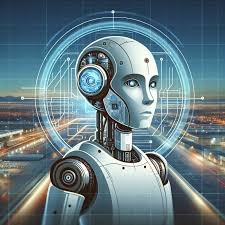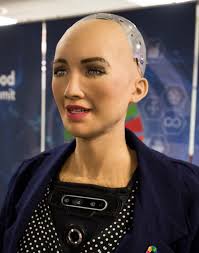Robotics

Introduction to Robotics
Robotics is the field of science and engineering that designs, builds, and programs machines capable of performing tasks that usually require human intelligence. These machines, known as robots, can sense their environment, process information, and act accordingly. Robotics combines principles from mechanical engineering, computer science, and electronics, creating systems that improve efficiency, safety, and precision in daily life and industries. Robots can operate autonomously or under human control, and they are used in fields ranging from healthcare and manufacturing to space exploration and entertainment.
Basic Parts of a Robot
Every robot consists of several essential components that allow it to function. The mechanical structure provides physical shape and movement, often using motors and joints. The sensors act as the robot’s eyes and ears, collecting data about the surrounding environment, such as light, distance, or temperature. Controllers or microprocessors process this data and make decisions based on preprogrammed instructions. Actuators convert electrical energy into motion, enabling the robot to move or interact with objects. Power sources, such as batteries, supply the required energy, while software determines how the robot behaves under various conditions.
Advantages and Disadvantages
Robotics offers numerous advantages. Robots can perform repetitive or dangerous tasks with high accuracy and speed. They improve productivity and reduce human error, especially in areas like medicine and manufacturing. Robots can work continuously without fatigue, making them ideal for 24-hour operations. However, robotics also has disadvantages. The development and maintenance costs can be high. Automation may lead to job displacement in certain industries, and excessive dependence on robots might reduce human skill development. Balancing technology and human involvement remains an ongoing challenge.
Real-World Impact and Future Scope
Robotics has transformed industries and daily life. From assisting in surgeries to exploring distant planets, robots are expanding human capabilities. Agricultural robots help with planting and harvesting, while domestic robots clean homes and assist the elderly. In the future, robotics will become even more integrated into education, healthcare, and transportation. Artificial intelligence will make robots smarter and more adaptive. The ultimate goal is to create machines that can understand human emotions, work collaboratively, and make ethical decisions for a better and safer world.
Python in Robotics
Python is a popular programming language used in robotics because it is easy to learn and integrates well with sensors and controllers. It allows students and engineers to quickly test logic, control motors, and analyze sensor readings. Below is a simple one-line Python example to greet the world, followed by a short example simulating how a robot reacts to distance sensor data.
print("Hello, Robotics!")
distance = 15 # in centimeters
if distance < 10:
print("Obstacle too close! Stopping...")
else:
print("Path clear. Moving forward.")
Famous Robots
Sophia

Sophia is one of the most advanced humanoid robots ever created, developed by Hanson Robotics in Hong Kong. She can display more than 60 facial expressions and engage in natural conversations with people. Sophia uses artificial intelligence, facial recognition, and speech processing to understand and respond meaningfully. Her design resembles a human face, complete with realistic features and expressive eyes. She has been interviewed on television and spoken at global conferences about technology and ethics. Sophia was even granted citizenship by Saudi Arabia, making her the first robot to receive such recognition. Her purpose is to help bridge the gap between humans and machines, teaching society about the future of AI and robotics. She continues to inspire new research in social and emotional robotics, symbolizing the merging of humanity and technology.
Rashmi

Rashmi is India’s first humanoid robot, created by Ranjit Shrivastava. She can communicate in multiple languages, including Hindi, English, Marathi, and Bhojpuri. Rashmi’s expressions and lip movements are synchronized with her speech, giving her conversations a realistic human feel. Her design incorporates artificial intelligence, machine learning, and natural language processing. Rashmi can answer general knowledge questions, interact with people, and even mimic certain emotions. She has been featured on national television, representing the advancement of robotics within India. Her development emphasizes the potential for regional language communication in robotics. Rashmi demonstrates how AI can be culturally adaptive, making human-robot interaction more relatable and effective for diverse communities.
Champak

Champak is an educational and assistive robot designed to help children learn basic concepts in a fun and interactive way. He uses sensors to detect motion and voice input, responding with cheerful speech and friendly gestures. Champak can perform small tasks, tell stories, and quiz students, making learning engaging. Built with durable components, he operates safely in classrooms and homes. Champak’s design focuses on child-friendly interaction, combining entertainment with education. He teaches teamwork, communication, and logical thinking. Champak showcases how robotics can make learning joyful and help children understand technology responsibly.
MCQs
1. What is the main purpose of robotics?
(a) To build only industrial machines
(b) To design and build machines capable of performing tasks that usually require human intelligence
(c) To replace humans completely
(d) To create only domestic appliances
► (b) To design and build machines capable of performing tasks that usually require human intelligence
2. Which component acts as a robot’s eyes and ears?
(a) Actuators
(b) Sensors
(c) Controllers
(d) Power source
► (b) Sensors
3. What is the function of actuators in a robot?
(a) Process data
(b) Collect environmental data
(c) Convert electrical energy into motion
(d) Provide power
► (c) Convert electrical energy into motion
4. Which humanoid robot can display more than 60 facial expressions?
(a) Rashmi
(b) Champak
(c) Sophia
(d) ASIMO
► (c) Sophia
5. What is a disadvantage of robotics?
(a) Can work continuously without fatigue
(b) High development and maintenance costs
(c) Improves productivity
(d) Reduces human error
► (b) High development and maintenance costs
6. Rashmi, the Indian humanoid robot, can communicate in which languages?
(a) Only English
(b) English and Hindi
(c) Hindi, English, Marathi, and Bhojpuri
(d) Hindi, English, and Spanish
► (c) Hindi, English, Marathi, and Bhojpuri
7. Which robot is designed for educational and interactive learning for children?
(a) Sophia
(b) Rashmi
(c) Champak
(d) Spot
► (c) Champak
8. Which part of a robot processes sensor data and makes decisions?
(a) Actuators
(b) Controller
(c) Power source
(d) Mechanical structure
► (b) Controller
9. What is one real-world application of robotics in agriculture?
(a) Painting walls
(b) Playing games
(c) Planting and harvesting crops
(d) Serving food
► (c) Planting and harvesting crops
10. Which programming language is commonly used in robotics for sensor control?
(a) Java
(b) Python
(c) C#
(d) Kotlin
► (b) Python
11. What is one advantage of robots over humans in industrial tasks?
(a) They can make mistakes easily
(b) Can work continuously without fatigue
(c) Require breaks
(d) Work slower
► (b) Can work continuously without fatigue
12. Which robot was the first humanoid robot developed in India?
(a) Sophia
(b) Rashmi
(c) Champak
(d) ASIMO
► (b) Rashmi
13. What does Champak teach children besides knowledge?
(a) Coding only
(b) Teamwork, communication, and logical thinking
(c) Only robotics theory
(d) Art skills
► (b) Teamwork, communication, and logical thinking
14. Which component of a robot converts information into physical movement?
(a) Sensor
(b) Controller
(c) Actuator
(d) Battery
► (c) Actuator
15. What is the primary role of sensors in a robot?
(a) Supply power
(b) Collect environmental data
(c) Execute movements
(d) Make decisions
► (b) Collect environmental data
16. Which humanoid robot has realistic facial expressions and interacts socially with humans?
(a) Champak
(b) Rashmi
(c) Sophia
(d) Spot
► (c) Sophia
17. What advantage does using Python in robotics provide?
(a) Hard to learn but very fast
(b) Easy to learn and integrates well with sensors
(c) Only works with humanoid robots
(d) Cannot process sensor data
► (b) Easy to learn and integrates well with sensors
18. What is one future goal of robotics?
(a) To replace all humans
(b) To create robots that understand emotions and collaborate with humans
(c) To eliminate education
(d) To stop industrial automation
► (b) To create robots that understand emotions and collaborate with humans